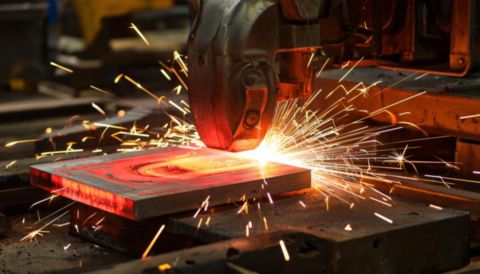قام فريق من العلماء من جامعة جنوب الأورال الحكومية بنمذجة وإثبات مقاومة التآكل العالية لسبيكة مبتكرة على المستوى النانوي. نُشر العمل المشترك مع زملاء من إيران وبريطانيا والصين والإمارات العربية المتحدة في المجلة الدولية "Colloids and Surfaces A".
شارك في الدراسة كل من ماجد ناصري، وإيفجيني تروفيموف، وألينا مياسنيكوفا، وديمتري ميخائيلوف، وناتاليا شابوروفا، وألكسندر أورلوف نيابةً عن جامعة جنوب الأورال الحكومية.
تنتمي السبيكة إلى فئة السبيكات عالية الإنتروبيا. هذا يعني أنها تتكون من خمسة معادن أو أكثر، ويجب أن يُضفي كل منها خصائص مميزة على السبيكة.
إن صنع سبيكة من عدد كبير من المعادن المختلفة ليس بالمهمة السهلة. هل سيكون من الممكن دمج مكوناتها، وهل ستحتفظ بخصائصها الفريدة، مثل التوصيل الكهربائي (الحديد) أو مقاومة التآكل (الكروم). لضمان النسبة المثلى للمكونات، من الضروري دراسة السبيكة على المستوى النانوي.
تُمكّننا الأساليب المُستخدمة في هذا العمل من الإجابة على العديد من الأسئلة المهمة عمليًا: ما هي المصفوفة التي ستُرتّب فيها حبيبات المعدن، وكيف ستتصرف أثناء المعالجة الميكانيكية، كالختم مثلًا. كل هذا مهم لأن الطلب لن يكون على سبيكة أو صفيحة معدنية، بل على شيء مصنوع منها.
تبيّن أن المعدن الجديد من أرخص السبائك عالية الإنتروبيا المعروفة عالميًا اليوم. يتكون معظم تركيبه من الحديد والنيكل. %15 من الكروم، الذي يُوفّر خصائص مقاومة للتآكل، و%10 من المنغنيز. وأخيرًا، يُمكن أن تكون النسبة المتبقية من النيوبيوم.
قام العلماء بنمذجة عدة نسخ من السبيكة. وقد أظهرت تركيبتها أفضل خصائصها، حيث يُشكّل الحديد والنيكل %65 ، والنيوبيوم %10.
تم اقتراح سبيكة بمثل هذه التركيبة لأول مرة، ووفقًا للعلماء، تُعدّ مثالية من حيث السعر والصلابة ومقاومة التآكل.
يمكن استخدام المنتجات المصنوعة من هذه السبائك المبتكرة في هندسة الطائرات والهندسة الميكانيكية، فهي مقاومة للبيئات القاسية ودرجات الحرارة المرتفعة.
تم دعم هذا العمل بمنحة من صندوق العلوم الروسي، ويُنفذ في إطار برنامج «الأولوية - 2030» ضمن المشروع الوطني «العلوم والجامعات».




